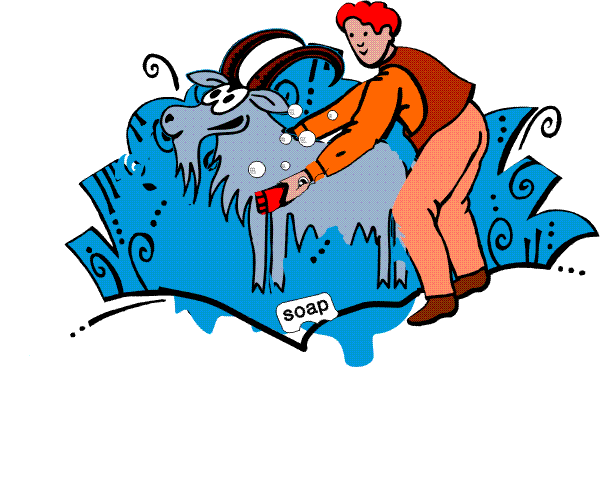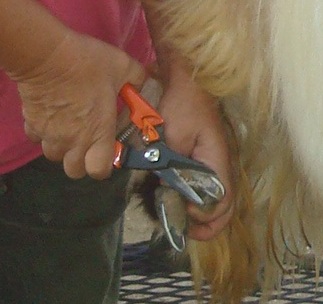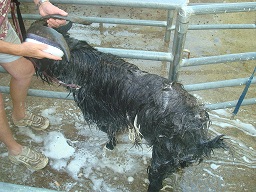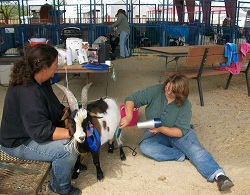Hoof Trimming
by Sue Johnson (Ancient Valley Ranch - Mojave, CA)
Hoof trimming is very important for the health of your goat.
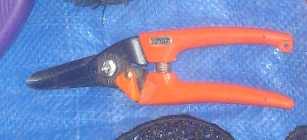 Hoof Trimmers
Hoof Trimmers |
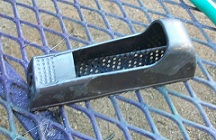 Carpenters Plane/Rasp
Carpenters Plane/Rasp |
- Routine hoof trimming will help prevent diseases of the hooves such as foot rot.
- Over grown hooves effect the way goats walks and can cause structural problems with their legs.
- With proper hoof trimming some foot and leg problems can be corrected over time.
- When trimming the Fainting Goat's hind feet, be careful when trimming the tips of the toes as you can quick them easier. Fainters sometimes drag their hind feet and so the bloodline is closer to the surface than on the front feet.
- If the hooves are severely overgrown, do not try to trim them perfect the first time. Over trimming can cause lameness. In cases such as this, it would be best to trim them frequently with a couple weeks in between until the feet are back in shape.
|
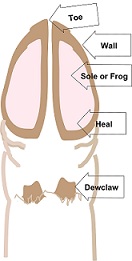
Anatomy of the Hoof |
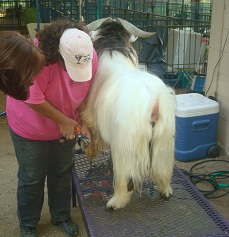
- If you own a stanchion, trimming hooves will be easier on your back.
|
-
Start by shaving the goats hoof. I shave the entire pastern.
-
This will enable you to properly seen the hairline and be able to judge when the hoof is trimmed level.
-
Make sure when trimming that the goat is standing on a level surface.
|
- With the point of your shears, clean out any dirt that has gotten stuck between the hoof walls and soles.
- Cut away any bent over or excess wall until it is level to the sole all the way around and continue to the tip of the hoof.
|
- Trim the tissue on the heels until the floor of the hoof is flat on the ground and the hoof is level with the hairline (eg, when you step back and look at the hoof, the hairline and bottom of hoof should be parallel lines with each other).
- Trim away any rotted out areas between the sole and hoof wall and also trim the hoof wall in between the toes. When this area is trimmed away, the toes will come together and should not be splayed out.
|
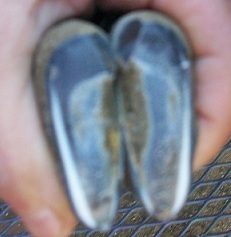
|
More Tips
- If the hoof has a lot of rotten tissue, dip it in hydrogen peroxide or bleach when you are done trimming.
- If the goat appears to have foot rot or foot scald, set his hoof for 5 minutes in a coffee can filled with 1 part zinc sulfate to 9 parts water.
- If the hoof bleeds while you are trimming it, don’t panic. Dip the area in iodine and apply pressure to the spot where it is bleeding. You can also sprinkle blood stop powder on it (corn starch or flour will work in a pinch). If it is really bleeding bad, and the pressure is not helping it to clot, you can cauterize the blood vessel with a disbudding iron and then give your goat a tetanus booster if needed.
- If the hind legs are postlegged or too straight, leaving the toes a little long may help give the leg more angle.
- A sicklehocked leg will benefit from trimming the toes short to a greater than 450 angle.
- If the legs toe out, trimming the total inner claw shorter and lower on each foot will help.
|

